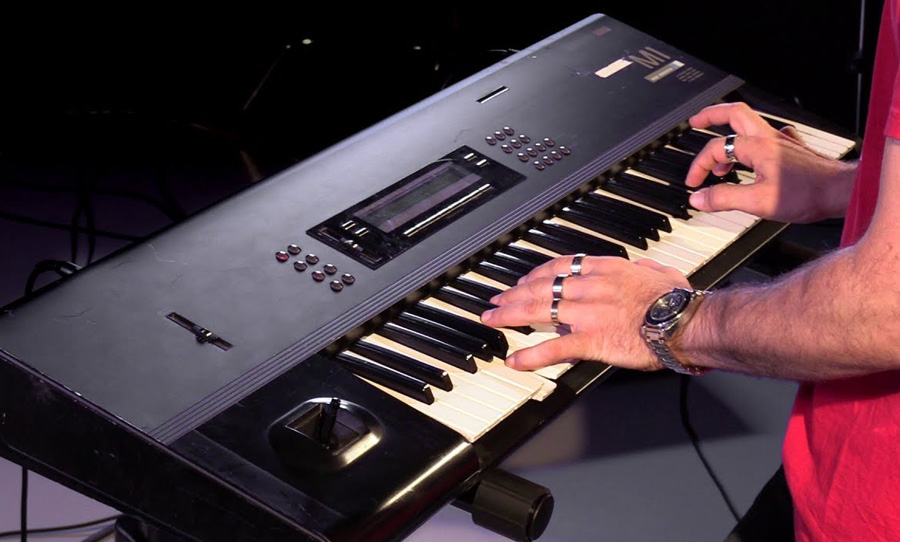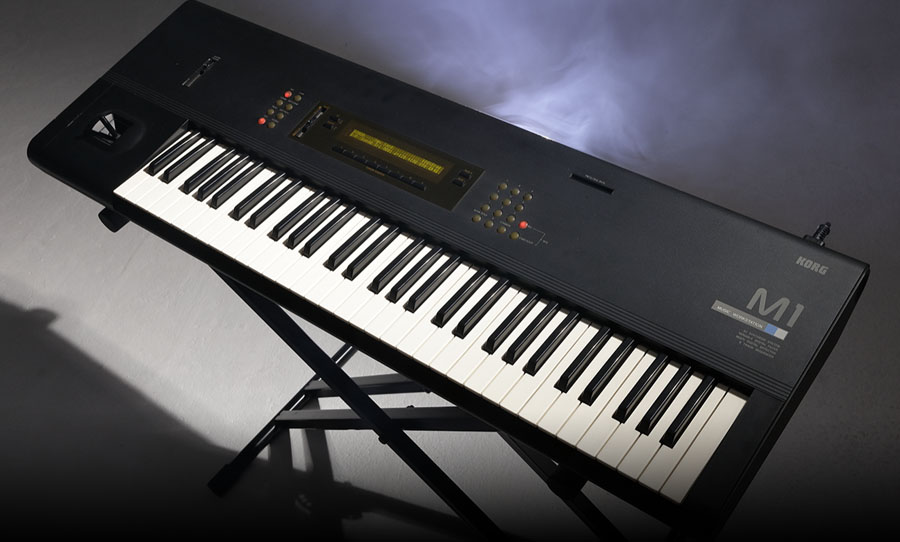The KORG M1 learned the lessons of Yamaha’s DX7 and Roland’s D-50 and perfected digital synthesis. Read on as we explore the best-selling synth of all time.
For those who have come to synthesis late, you’d be forgiven for thinking that the story began and ended in the analog domain. Aside from a few exceptions, the tributes these days tend to exclusively commemorate the analog classics.
In the original era of synth hardware, analog technology had run its race—in the commercial arena at least—by the mid-’80s. The catalyst for this event was a digital revolution, powered by three pivotal models, which swept through the synth landscape. The Yamaha DX7 broke the ice, the Roland D-50 picked up the baton, then the KORG M1, the best-selling synth of all time, topped them all.

Third time’s a charm
The KORG M1’s came later than the other two giants of the ’80s digital oeuvre. Yamaha’s DX7 launched in 1983—and while it wasn’t as advanced as the Roland D-50 or the later M1—it provided enough power and flexibility to break the analog stranglehold on the synthesizer market. Competitively priced, with sounds from a different planet, the DX7 ushered in a new era.
In 1987, Roland’s D-50 came along to compete with the DX7 head-on. The DX7’s method of sound production relied on FM synthesis, while the calling card of the D-50 was ‘linear arithmetic’ a technique that relied on short, sampled attacks, blended with digitally formed sustains. It also incorporated effects like reverb and chorus and a suite of immortal factory presets.
Its time at the top of the synth charts was relatively brief, however, because only a year later, there was a new kid on the block. The KORG M1 delivered all the tones of its forbears but made significant workflow improvements. In fact, it broadened the horizons of the instrument and brought it into the age of the digitally powered studios.
Not just an instrument
The M1 kicked off the era of workstations—not exactly the DAWs that we think of today, but machines that could dish up inspiring presets and also provide versatile routing, deep multitimbral sounds and sequencing. It had a more comprehensive effects library compared with the D-50 and MIDI implementation that superseded the DX7. As such, it became the hub for many a cutting-edge studio in the late ’80s and early ’90s.
The versatility of the M1 made it a producer’s best friend; its bang for buck ensuring its place in the studio for the long haul. The synth shipped with 100 factory presets and because the M1 could access 4MB of sample ROM (a neolithic amount these days, but this was more than 30 years ago), the sounds were of a high-quality and very diverse.
It was common practice for synth designers to ship instruments to different regions with their own presets. Perhaps it was for a lack of space, or for the commercial imperative of catering to specific markets. In any case, KORG shipped every M1 with the same 100 sounds. The world got used to hearing these iconic tones all over the charts, which fuelled the desires of prospective buyers.
Into the mainstream
Throughout the ’80s, electronic instruments worked their way into pop productions. But there were challenges in incorporating a host of dedicated machines into a single production with ease and without breaking the bank. Almost a decade earlier, the Linn LM-1 emerged. Sure, it was capable of producing crisp, realistic drum sounds, but it was very expensive. Roland made iconic analog drum machines, but they weren’t even trying to replicate real sounds.
Nobody disputes the greatness of these specialist devices, but on a practical level, they were no match for the M1. This instrument more than any other brought electronic music into the mainstream. Take Madonna‘s Vogue for example. The choppy rhythms of the M1 piano patch complements her pop delivery, but at the same time, lends the glossy production the grit of an acid-house track.
Though the sample plus synthesis structure is designed to create realism, the way that the M1 was used and abused by producers made it the go-to house instrument. In the same that rock music is defined by the electric guitar, the explosion of house-heavy pop was defined by the M1.
This pivotal model was just the beginning of the world’s fascination with the workstation and emboldened KORG to continue their pursuit of this particular kind of production tool. The philosophy that drove this line of instruments was different to their analog predecessors. The analog types were adopted more of an open-ended, experimental approach to building tones, whereas this new digital breed had fresh, professional sounds, right out of the box.
In the ’90s, the Triton series would emerge to be a spiritual successor. Later still came the Kronos line, which is still in production today and a hugely powerful system. In the beginning, though, there was the M1. With its stunning sounds and ability to be at the centre of a whole production, it changed what musicians and producers expected from a synthesizer.



